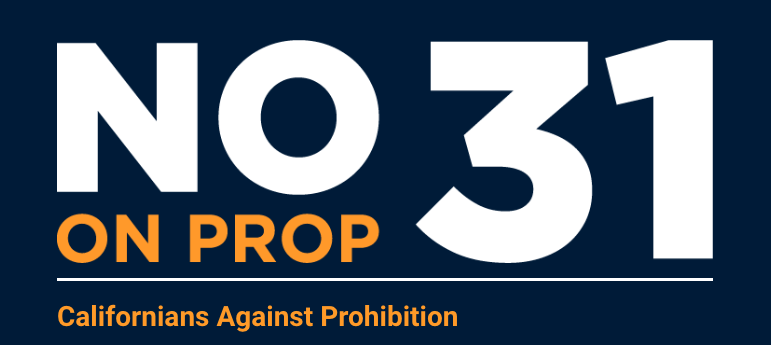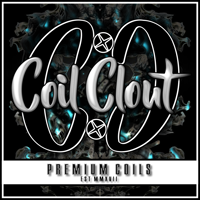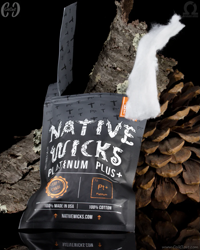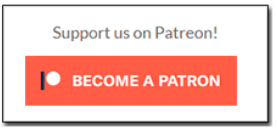Vote NO on Prop 31 in California !
It’s November, and time to vote NO on Prop 31 in California !
We’re sharing some articles about Prop 31 here, one post from our site with an article by Guy Bentley, and some other information regarding Prop 31.
Prop 31 is the Calfornia proposition on the November ballot in 2022 that aims to ban all non-tobacco flavors in tobacco products, most importantly, ‘vape juice’ or ‘e-liquid’.
Here’s Guy Bentley with his piece about Prop 31:
By GUY BENTLEY
Thanks to a mammoth effort of signature gathering undertaken last year amidst the height of the COVID-19 pandemic, California voters will have the final say on whether or not the state embarks on a new era of prohibition. Last year, state lawmakers passed a bill banning flavored tobacco products. But after getting enough signatures to qualify for the statewide 2022 ballot, the decision over banning flavored tobacco products will be left to California voters.
In the 2022 election, Californians will decide whether to ban the sale of nearly all flavored tobacco products, including menthol cigarettes, flavored e-cigarettes, and smokeless tobacco. Lawmakers exempted pricey cigars, hookah, and pipe tobacco products from the ban.
California wouldn’t be the first state to enact such a ban. In June 2020, Massachusetts became the first state to implement a flavored tobacco ban. At the time, supporters of the ban claimed tobacco consumption would plummet and fears of black markets and cross-border sales were overblown. With fewer smokers, Massachusetts would also save money by reducing health care costs, they argued.
But reality soon dispelled such optimism. From the time the ban was implemented in June 2020 through November 2020, Massachusetts’ cigarette excise taxes fell 24 percent. However, cigarette sales in neighboring Rhode Island and New Hampshire rose 18 percent and 29.7 percent, respectively, compared to the same period in 2019.
Massachusetts lost $62 million in cigarette excise tax revenue in the first five months of its ban. And these figures underestimate Massachusetts’ total losses because they do not account for the state’s lost sales of flavored e-cigarettes, smokeless tobacco, or cigars. According to the Tax Foundation, prohibition could cost Massachusetts a total of $120 million in the 2020—2021 fiscal year.
In contrast, total cigarette sales skyrocketed in New Hampshire by 46 percent and menthol sales rose by 90 percent. Total cigarette sales in Rhode Island rose 20 percent and menthol cigarette sales climbed by 29 percent. So, thanks in large part to the ban next door, Rhode Island and New Hampshire gained $14 million and $28.5 million in cigarette taxes, respectively.
While the sales of flavored products did drop in Massachusetts, sales of traditional, non-flavored cigarettes increased 15 percent. So when you combine the increased use of non-flavored cigarettes in Massachusetts with the rising cigarette sales in neighboring Rhode Island and New Hampshire, it appears cigarette sales in the region actually increased overall after Massachusetts’ prohibition went into effect.
These results are important not just because they demonstrate an immediate economic impact from the state ban, but due to cross-border trade and substitution to non-menthol cigarettes, any health benefits are likely to be severely limited. In other words, the loss in tax revenue will not be offset by lower health care costs.
Advocates for the prohibition of flavored cigarettes also hope the ban will dramatically reduce the smoking rate of Black Americans. They correctly observe that a disproportionate number of Black smokers choose menthol products—with around 85 percent of Black smokers using menthols. While Black smokers are more likely to use menthol products and white smokers are more likely to use non-menthol products, smoking rates among young Black people are lower than for white youth. In 2017, the latest year for which we have complete data, California’s youth smoking rate amongst whites was 5.9 percent while the Black smoking rate was significantly lower, at just 1.6 percent.
Menthol and non-menthol cigarettes are equally dangerous so one has to ask wonder why policymakers have targeted and banned the product preferred by Black smokers while the cigarettes used by whites can stay on the shelves. When Congress debated a similar flavor ban last year, the American Civil Liberties Union and other civil rights groups also warned banning flavored tobacco products would disproportionately impact people of color, trigger unnecessary criminal penalties, and prioritize criminalization over public health and harm reduction efforts. They’re right.
California was at the forefront of recognizing that the war on drugs was a moral and empirical failure. And yet, the legislature has eagerly committed itself to a new war on flavored tobacco. Thankfully, voters will have the final say.
Guy Bentley is director of consumer freedom policy at Reason Foundation.
(This article was originally published here.)
…and now some information from CASAA, the wonderful organization that’s helping protect vaping rights in the U.S.
ARE VAPES BANNED IN CALIFORNIA?
In 2020 a bill known as SB 793 was passed in California, which sought to ban the sale of many tobacco products – including vapor products – in flavors other than tobacco in all brick and mortar locations within the state. But enactment of the bill was stopped short by a campaign (entirely funded by cigarette companies) challenging the legislation and putting the decision to California voters in what’s known as a veto referendum. This means that the flavor ban is in limbo until it’s voted on this November in California’s General Election.
The referendum is designated as Proposition 31 on California ballots, and a “No” vote will stop the flavor ban from ever taking effect.
While vapes are not technically banned in California, the issue is complicated at the federal level. The only vapor products that are legally allowed to be sold anywhere in the US are the limited products that the US Food & Drug Administration (FDA) has authorized for sale, or certain products which have been battling the FDA in court while their applications are being reviewed.
To date, the FDA has refused to authorize any vapor product in a flavor other than tobacco. So while there are still retailers selling a variety of vaping products in California, and across the country, technically they are subject to enforcement by the FDA, which can issue warning letters and other penalties and legal actions at any time.
Even if FDA were to eventually authorize some vapes in flavors other than tobacco, they would still be banned in California if this referendum passes.
Prop 31 text and info can be found by clicking HERE.
California Proposition 31, the Flavored Tobacco Products Ban Referendum is on the ballot in California as a veto referendum on November 8, 2022.
| A “yes” vote is to uphold the contested legislation, Senate Bill 793 (SB 793), which would ban the sale of flavored tobacco products. |
| A “no” vote is to repeal the contested legislation, Senate Bill 793 (SB 793), thus keeping the sale of flavored tobacco legal in the state. |
So, please, vote NO on Prop 31 in California on November 8th ,2022. You will be helping to save lives !
.
Share:





